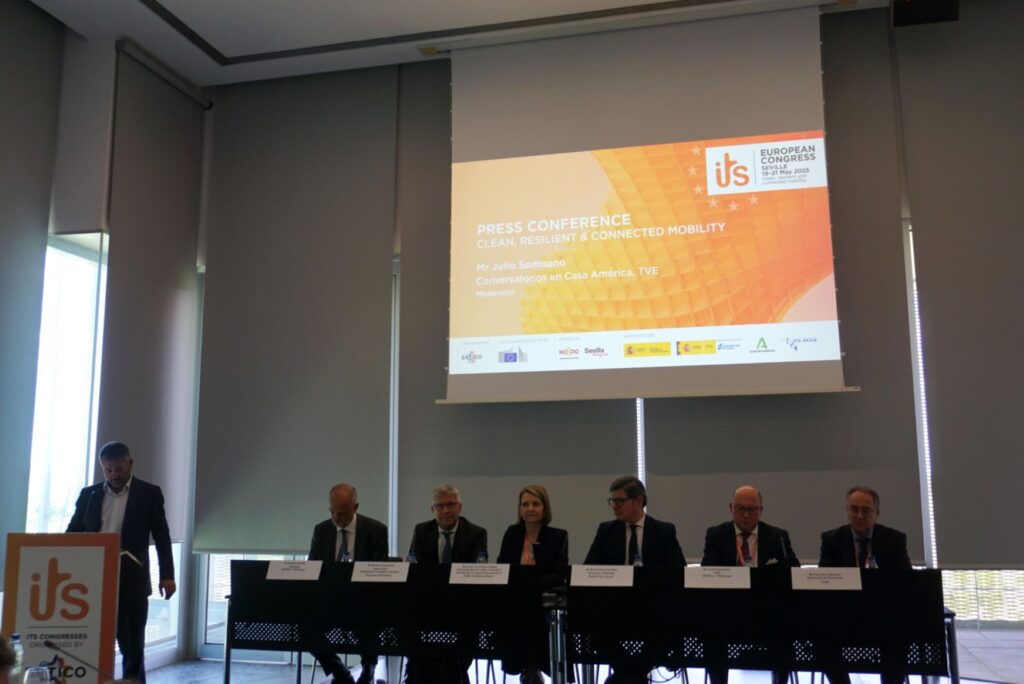How Intelligent Transport Systems Transform Mobility in Europe
As traffic congestion, emissions, and inefficiencies rise across urban centres, Europe is turning to technology for solutions.
At the ITS European Congress 2025 in Seville, Spain, experts gathered to showcase the latest innovations in intelligent mobility. REVOLVE was on the ground at the event.
It isn’t hard to notice the dominance of cars on the streets if you live in a city. Every day, more cars and trucks hit the roads, leading to increased traffic jams, rising fuel costs, and increased CO2 emissions. Simply building more roads is not a sustainable solution to these problems.
This is where Intelligent Transport Systems (ITS) come into play. ITS aim to make transport safer, more efficient, competitive, sustainable, and secure by applying the latest information and communication technologies to the transport sector. Examples include enabling users and traffic managers to share information for better coordination, Electronic Stability Control systems designed to stabilise vehicles and prevent skidding, and eCall, which automatically contacts emergency services and transmits the vehicle’s location after a crash. Other initiatives include a railway signalling and management system that integrates a new control-command framework with advanced radio communication for voice and data, as well as a programme aimed at modernising air traffic control infrastructure.

What solution is being proposed?
To accelerate the deployment of innovative transport technologies across Europe, a legal framework was adopted on 7 July 2010. Its goal is to establish interoperable and seamless ITS services while allowing Member States the flexibility to choose which systems to invest in.
There are many regulatory frameworks from the EU, it’s important to see them not as a controlling factor but as an encouraging factor to do more.
Angelos Amditis, Chairman of ERTICO – ITS Europe
The accompanying action plan outlines measures across six key areas:
- Optimal use of road and traffic data;
- Traffic and freight management;
- Road safety and security;
- Integration of ITS applications in vehicles;
- Data protection and liability;
- European ITS coordination.
To keep pace with new mobility trends, a directive amending the original ITS Directive was adopted in November 2023. This update addressed the emergence of new road mobility options, mobility apps, and connected and automated transport systems.
What are the benefits?
With the update, people will benefit from faster, better coordinated, and more harmonised use of intelligent transport systems and services. This supports the development of a transport system that is cleaner, safer, and more efficient.Clear policies and a broader potential market for ITS services will benefit the industry, while consumers will enjoy earlier and wider access to these services – enhancing driving safety comfort and efficiency. Transport users will also benefit from less congestion, less accidents, and more travel options.

Room for improvement
The ITS Congresses, organised every two years in Europe, and every third year in the EMEA region, aim to bridge the worlds of mobility, technology, and innovation, gathering the experts in the field. It recognises that mobility challenges transcend borders. Therefore, these congresses address not only local and national concerns, but also global ones, fostering a worldwide dialogue on smart mobility solutions.
Congresses like this allow us to collectively improve our approach in an ever-changing landscape of mobility.
Anna Lux Himenez Ortega, Provincial Head of Traffic of Seville and Coordinator for General Directorate of Traffic in the Andalucia Region
Taking leaps forward
In the coming years, the digitalisation of transport in general and ITS in particular are expected to take a leap forwards. As part of the Digital Single Market Strategy, the European Commission aims to increase the use of ITS solutions to enable more efficient management of the transport network for both passengers and businesses. ITS will support better journeys and operations across individual and combined modes of transport.
Intelligent Transport Systems are becoming a practical solution to some of Europe’s most pressing mobility challenges. With a clear policy direction from the EU and strong collaboration across sectors, ITS is set to play a key role in improving how people and goods move. As digitalisation accelerates, the focus remains on making mobility systems more efficient, sustainable, and better connected – benefiting both users and the wider environment.
